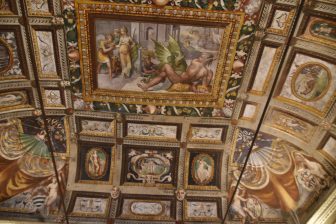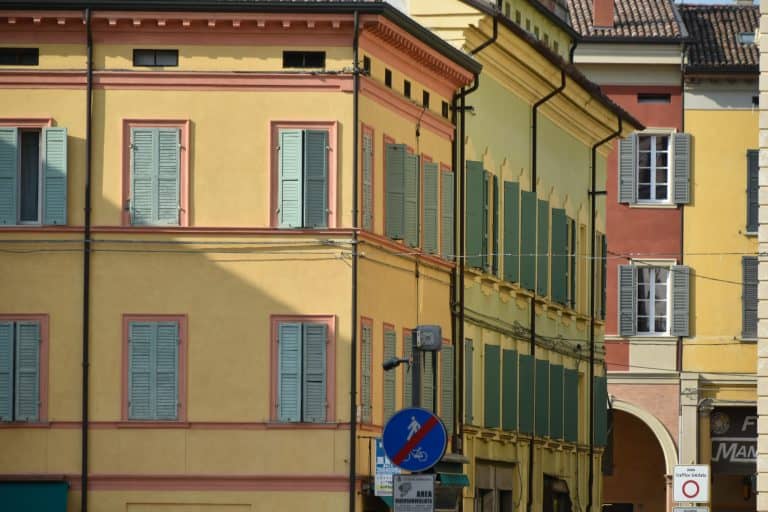
[June 2025] After a satisfying lunch in Carpi, Emilia-Romagna, Italy, we returned to our hotel in Correggio for a rest.
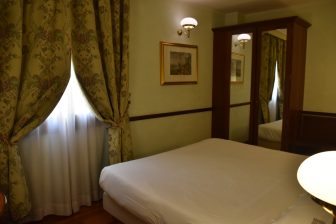
The hotel was called Phi Hotel dei Medaglioni and faced the portico on the town’s main street.
You wouldn’t guess it from the entrance, but it apparently has 54 rooms.
The hotel was apparently renovated from three historic buildings.
The room was small, but the classic interior was relaxing.
The breakfast room was spacious and well-equipped.
However, due to the festival, it was very crowded, and the staff were working hard, but it seemed like they couldn’t keep up.
Even so, each coffee was made and served by a staff member.
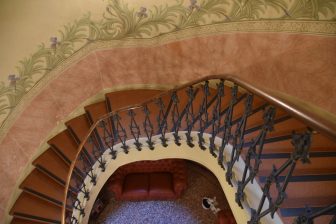
Good old-fashioned Italian service.
Street performers for the festival were also staying here.
But these weren’t just any street performers; they were selected through auditions, and their names were even listed in the festival pamphlet.
After a short rest, we explored the town.
We entered the Church of San Quirino, dedicated to the town’s patron saint, San Quirino.
The main altar is located at the top of a staircase, and the church is not particularly decorative, but not too plain either.
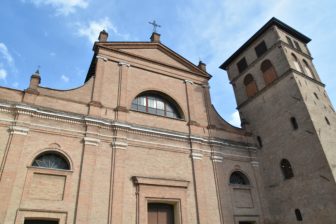
After researching, I found out that the church’s origins date back to the 9th or 10th century, but the current structure was built in the 16th century.
A magnificent, historic-looking pipe organ caught my eye, dating back to 1612.
However, it was closed for a while due to extensive damage caused by the 2012 Emilia earthquake, a major earthquake with a magnitude of around 6.
After being reinforced and restored at a cost of 858,000 euros, it reopened in 2019.
The earthquake‘s epicentre was within 30 kilometres of the town, causing considerable damage to buildings in the area and even casualties.
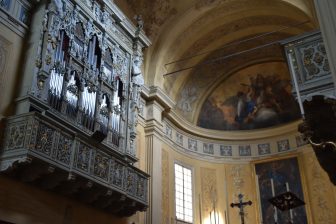
There’s a bell tower next to the church, and we decided to climb it.
However, we were allowed to go only halfway up, which felt a bit like a cheat.
The sign explained that this tower was originally a castle watchtower, but it was repurposed as a bell tower after the church was built.
So, the tower is actually older than the church.
Corso Cavour, the street where this church is located, is lined with other cultural buildings, including Palazzo di Principi and Teatro Asioli.
On the day, an exhibition of local artists was being held in the palazzo.
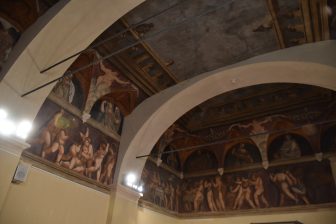
The theatre was closed so I couldn’t see inside, but looking at the photos in the pamphlet, it looked quite luxurious.
As a theatre lover, I’d love to see something here someday.

